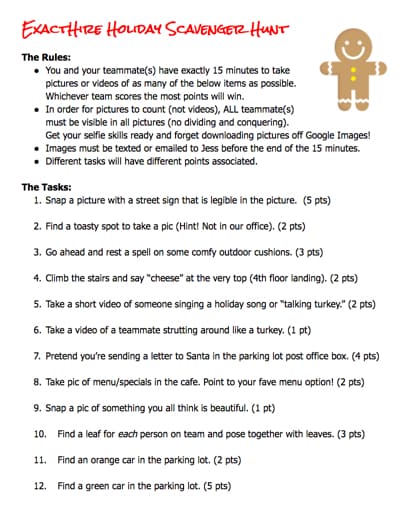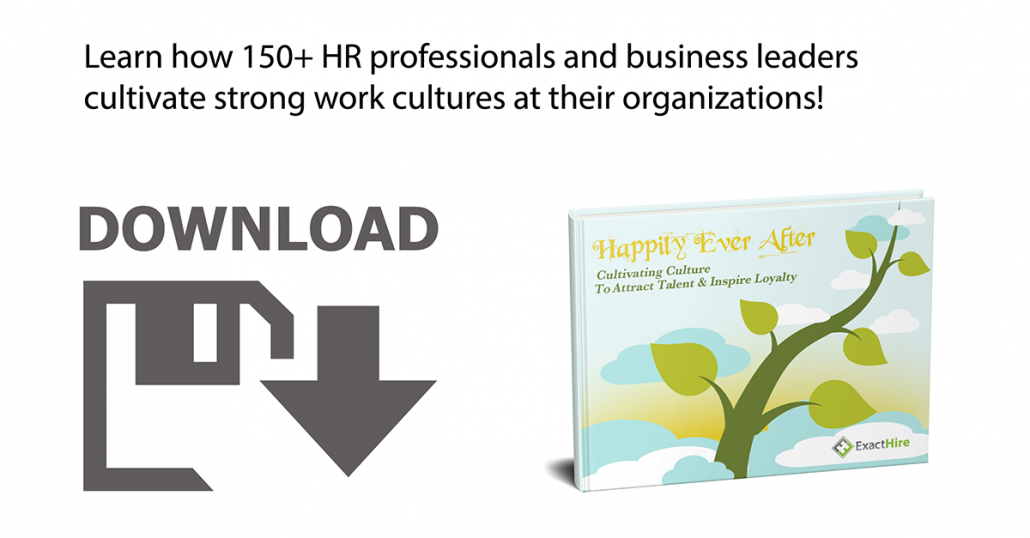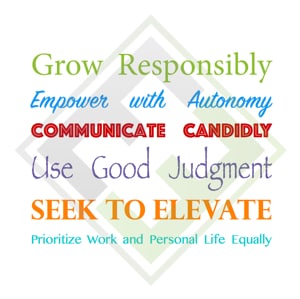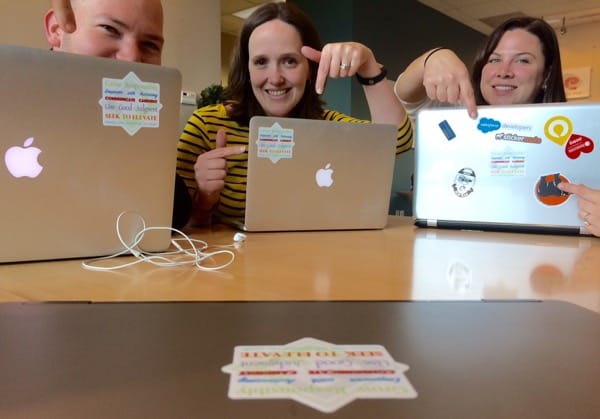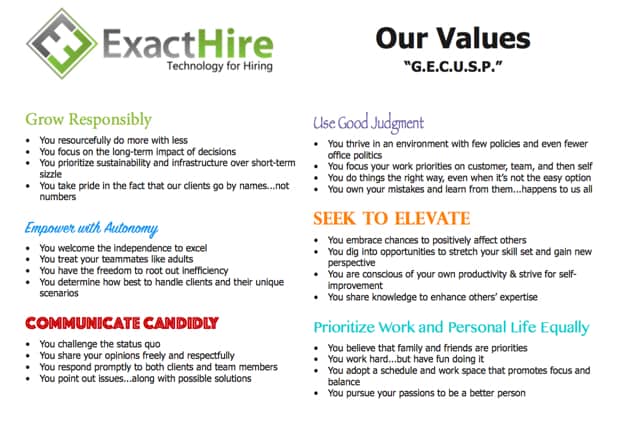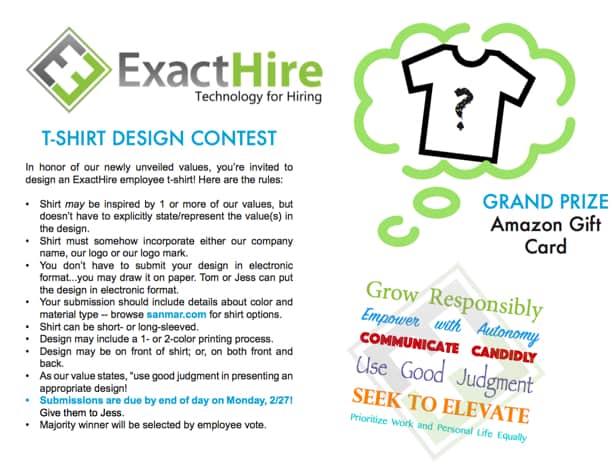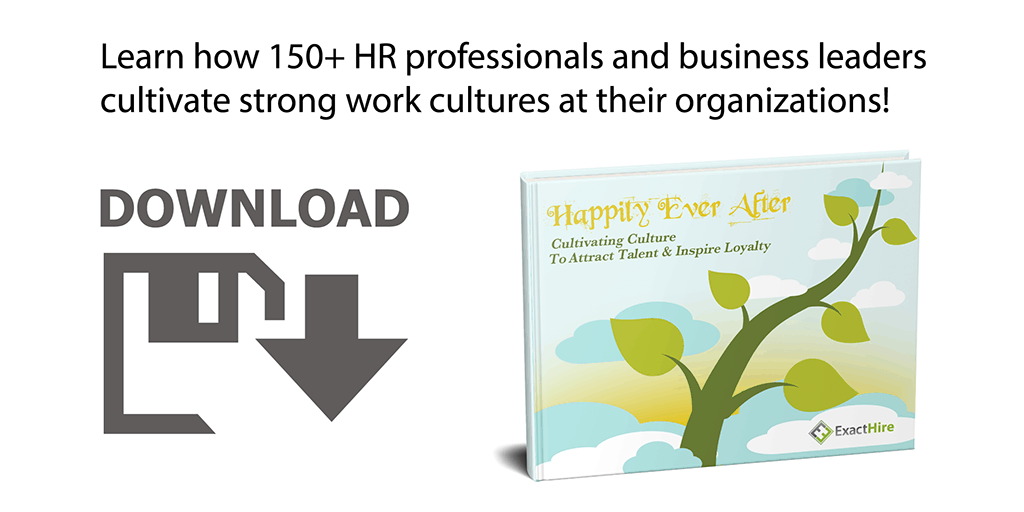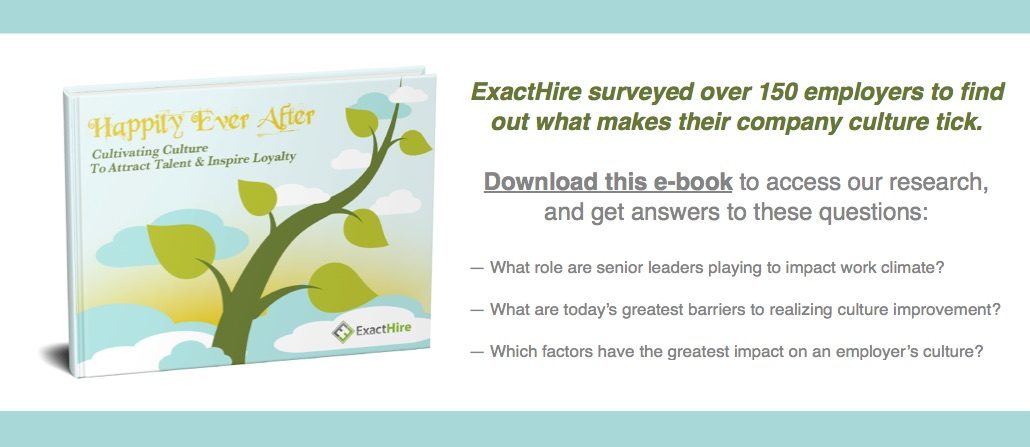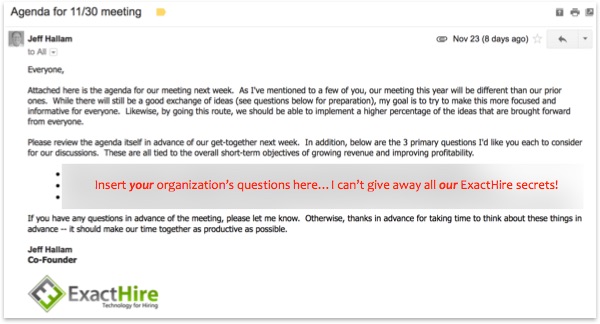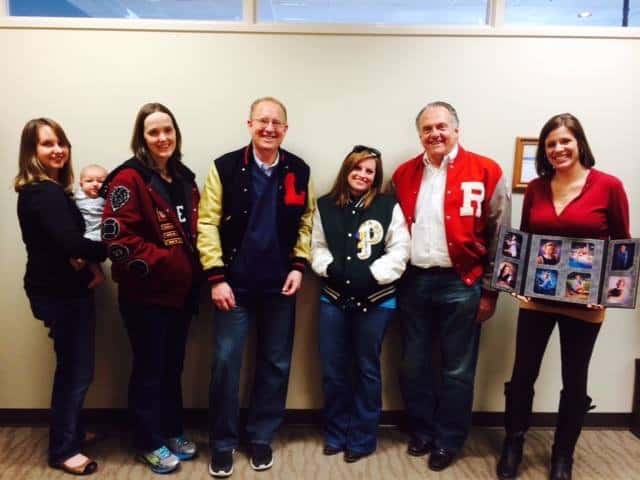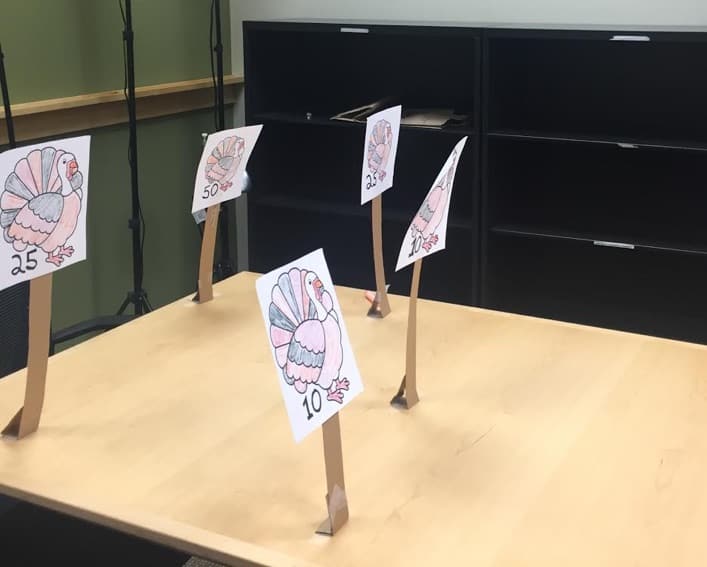7 Tips for an Awesome Office Holiday Scavenger Hunt
The ExactHire team continues its pursuit of the ultimate interoffice competition ideas, and is pleased to bring you the latest installment of the “Monday Funday” recap! Rather than simply provide a rehash of recent events, let’s break it down so you can recreate the fun in your workplace this holiday season! Here’s everything you need to know to plan a simple, yet fun-filled office scavenger hunt.
1 – Look into logistics
Before you get too far down the planning path, scope out the resources around your office and/or office building to get an idea of how far you might like your co-workers to travel in order to complete items on your scavenger hunt list.

Posing by the road sign required the teams to go away from the office building to earn more points…but not too far!
While you want to add some items that have a greater degree of complexity, you don’t want them so far away that it becomes impossible for a team to complete many of the items in the time period allotted. Also, make sure you don’t plan holiday-oriented tasks that may not be inclusive of all religious preferences within your particular team.
Additionally, consider whether you want to run a digital scavenger hunt or a traditional one. With a digital scavenger hunt, you might require teams to provide photographic evidence of all the items they complete and text or email it back to the Gamekeeper. With a traditional hunt, remember to provide each team with a container/bag for collecting items they come across at each challenge. Then, they will have to present the items at the finish line for credit.
Lastly, as you think about how many employees will choose to participate (and it should be optional), decide how many players will be on each team and plan the teams in advance so that individuals have the opportunity to interact with people outside of their normal department or work area.
2 – Be timely
For many offices, productivity is one of the first things to suffer during the holiday season. Employees are thinking more about the next best place to hide their family elf or how many cookies they still have to bake than what is on their work agenda.
Give them a special occasion to embrace the holiday spirit, but be respectful of work schedules and keep it to no more than 15-20 minutes. That’s plenty of time to burn off some energy and bring people together for a quick culture-building activity.
In our experience, these types of competitions are best attended when they immediately follow some kind of department or all-hands company meeting. Everyone is already in one spot and therefore more likely to stay an extra fifteen minutes to join the fun. We do our Monday Funday events after our company meeting on the third Monday of each month.
It can be tempting for employees to rush back to work after a company meeting, but by keeping it within its planned time frame you respect their time. Bribery with an exciting grand prize or bragging rights doesn’t hurt attendance either (wink, wink).
3 – Allow people to prepare
When scheduling an office scavenger hunt, give your employees plenty of advance notice and ask them to RSVP to the event. From participants’ point of view, this allows them to budget time to take part in the event, and it allows the organizer (aka “Gamekeeper) to plan teams and the appropriate number of scavenger hunt tasks.
If you do endeavor a virtual hunt, make sure participants know that they will be asked to take pictures and/or video in advance. That way, they can temporarily make space available on their mobile devices for that purpose, if necessary.
4 – Be clear about rules
Some of your employees…you know the ones…will be more competitive than others. So make sure you have rules or an instructions sheet that clearly outlines what teams must do to successfully complete scavenger hunt tasks and win the contest.
In order not to give anyone an early advantage, hand out the rules and task sheet to all teams just prior to the start of the scavenger hunt, but provide a verbal overview of the rules at that time and take time to answer questions.
This is also an ideal time to make sure all teams are paying attention to the rules instead of reading the tasks and planning their first move. All but two of the teams fell victim to this temptation during our recent ExactHire holiday scavenger hunt and so the Gamekeeper awarded a bonus point to the only team that was able to successfully repeat one of the key rules of the game. And wouldn’t you know it? That was the winning team in the end–their single bonus point put them ahead when all the teams successfully completed all the tasks within fifteen minutes.
Here’s an example of the rules and task sheet we used for our holiday hunt.
5 – Have a back-up plan
As I mentioned above, during our scavenger hunt all three teams completed all scavenger hunt tasks within the time allotted. The Gamekeeper wasn’t expecting this to happen, and so be sure that you have contingency plans for awarding bonus points or presenting a tie-breaker task at the end in the event of a tie.
Better yet, have more tasks than you’d ever imagine any one team being able to complete. At ExactHire, we awarded different amounts of points based on the difficulty of the task in order to allow teams more flexibility to plan their strategy, if desired.

Mailing a letter to the big guy in the red suit!
6 – Celebrate with refreshments
At the conclusion of your scavenger hunt, if teammates gave it their all, they may be a bit winded. Have refreshments available afterwards to bring people together to recount the humorous events of the hunt, celebrate the winner with a special certificate (and perhaps traveling trophy) and give people a breather.
During the fall and winter holidays, warm spiced apple cider or a hot chocolate bar are often well received beverages. Additionally, a plate of cookies, holiday trail mix or some caramel popcorn are great accompaniments to give everyone a little reward for their efforts. As you plan your mini-menu, be mindful of any dietary restrictions present with your staff members and try to choose options that will appeal to everyone involved.
Consider coupling the post-event festivities with another “feel good” activity, if time permits. For example, during our recent hunt at ExactHire we took time to write down what we are each thankful for professionally and personally and then we displayed the notes on a prominent wall in our office. You can keep it pretty basic (as we obviously did in the photo below); or, purchase a stack of pre-cut turkeys or snowflakes and use them as the message notes.
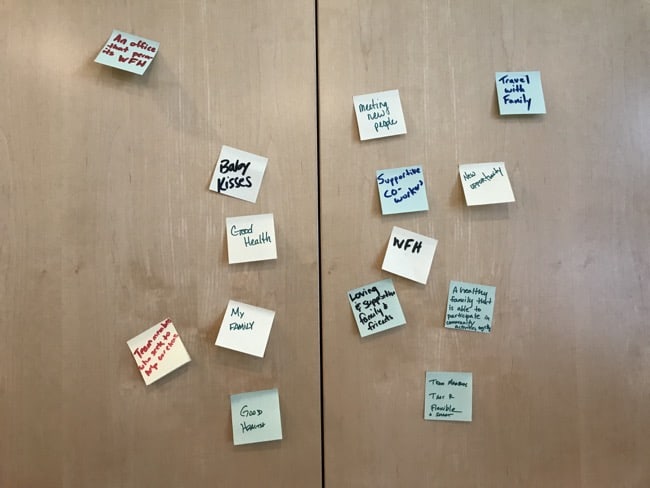
7 – Spread the joy
While it really doesn’t take a huge amount of effort to put together a seasonal scavenger hunt for your organization, it is worth celebrating and sharing with others. Document the fun (and maybe the unexpected bloopers) of the event on social media or in a corporate blog (oh wait–I just did that!) as a shining example of your positive employment culture and brand. Just make sure you get permission to use the photos and videos you post before publishing. And yes, I did check to make sure I could share some of our holiday antics below…
Your holiday office scavenger hunt is a great resource for showing future employees the fun side of working for your company. Go plan your next “funday” scavenger hunt today!


